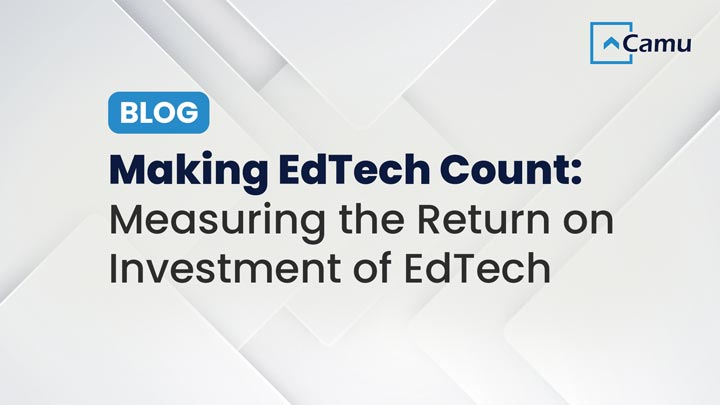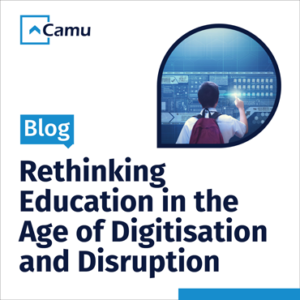
Making EdTech Count: Measuring the Return on Investment of Educational Technology
EdTech is no longer a novelty, but a powerful tool for enhancing learning experiences and institutional efficiency. Unlike traditional financial investments, however, measuring the return on investment (ROI) for EdTech goes beyond simple financial gains. This article explores the parameters that could be used for measuring the multifaceted value of EdTech, empowering educational institutions to make informed decisions about resource allocation and technology adoption.
Why Measure EdTech ROI?
Measuring the return on investment (ROI) of EdTech solutions is critical for educational institutions for several key reasons:
- Resource Optimization: Significant budgets are allocated to EdTech. Measuring ROI helps justify these investments and ensure resources are optimally deployed, enhancing their impact on student learning
- Decisions on Continued Use: ROI analysis provides educators and administrators with concrete data to guide their decisions about continued use and future deployments of EdTech tools
- Strategic Planning: Without a systematic evaluation of EdTech’s impact and efficiency, institutions struggle to gauge the effectiveness of their technology investments. This lack of clarity hinders strategic decision-making
- Continuous Improvement: By identifying areas for improvement through ROI analysis, EdTech companies can refine their products to better meet the evolving needs of educators and students
- Optimizing Student Value: Understanding EdTech ROI empowers institutions to make data-driven decisions about fee structures. This ensures they can justify fee adjustments while demonstrating the value the institution brings to students’ learning experiences
In essence, ROI goes beyond financial metrics. It’s about demonstrating the positive impact EdTech has on educational outcomes. By establishing clear objectives, gathering relevant data effectively, and presenting findings in a clear and compelling way, educational institutions can make a strong case for the value of their EdTech investments
Beyond the Bottom Line: The Multifaceted Impact of EdTech Investments
EdTech solutions deliver value to institutions in multiple ways, each requiring a distinct approach to measuring ROI:
- Academic ROI: Student engagement systems like Learning Management Systems (LMS), Choice-Based Credit System (CBCS) platforms, and student advising tools directly impact student success. Academic ROI can be measured by tracking student achievement metrics aligned with these systems’ functionalities such as higher grades, faster course completion rates, etc
- Operational ROI: Administrative systems like Student Information Systems (SIS), CRM tools, and Education ERPs enhance efficiency and effectiveness. Operational ROI can be assessed by measuring the positive impact on metrics like reduced administrative workload, faster processing times, and streamlined communication
- Reputational ROI: Modules for accreditation, ranking, and quality assurance contribute to institutional prestige. Reputational ROI can be evaluated by tracking improvements in rankings, accreditation standing, and positive media coverage attributable to EdTech implementation
Measuring Academic ROI: Quantifying the Impact on Student Success
EdTech platforms can significantly enhance student success through various functionalities:
- Personalized Pathways: Real-time assessment allows educators to adapt instruction and resources to suit individual needs
- Adaptive Learning: Difficulty level is adjusted based on student progress, ensuring an optimal challenge threshold
- Worldwide Collaboration: EdTech fosters connections across geographical barriers, enriching learning experiences
- Insights Driven by Data: Educators acquire insightful data on student behaviour, informing instructional strategies
- Informed Decision Making: Availability of real-time data for informed decision making
Some of the metrics for measuring Academic ROI are as follows:
- Academic Performance: Track improvements in metrics like exam scores, average graduating GPAs, and program completion times.
- Graduation Rates: Monitor overall graduation rates and track progression rates for multi-level programs
- Engagement Levels: Measure student engagement through metrics like attendance in online classes, participation in discussions, time spent on tasks, platform usage data, and self-reported satisfaction
- Placement Rates: Track the percentage of graduates securing placements in prestigious institutions or relevant fields
- Innovation and Research: While a direct quantification of the value of innovation in research and learning may be difficult, you could track the number of research papers published, patents filed, or awards received by students using the EdTech platform
Measuring Operational ROI: Quantifying the Operational Benefits
Administrative EdTech systems can significantly improve institutional operations. Here’s how to quantify those gains:
- Enrollment Efficiency: Track application rates, applicant demographics, and application sources to assess the impact of EdTech on attracting qualified students. This data can help optimize marketing campaigns and target the right audience
- Retention Rates: Monitor student retention rates to gauge the success of student support systems
- Process Efficiency: Assess the time required to execute key administrative tasks (e.g., fee collection) prior to and after implementation of the system. Reduced processing times indicate improved efficiency
- Data Quality: Track data entry errors and complaints related to data accuracy. A decrease in both signifies a positive ROI
- Cost Savings: Quantify cost reductions from reduced manpower, decreased paper usage, and eliminated redundant systems
- Compliance and Reporting: Evaluate the ease and accuracy of compliance reporting. Measure time and effort spent compiling reports, errors in reports, and adherence to deadlines. Reduced faculty involvement in administrative tasks due to streamlined reporting frees up time for student-focused activities, potentially leading to improved academic outcomes.
- Quality of Decision Making: The qualitative impact of EdTech on data-driven decision-making can be tracked by the number of decisions informed by data accessible through the new systems.
Measuring Reputational ROI: Quantifying the Intangibles
While challenging to quantify definitively, reputational gains from EdTech implementation can be measured through several indicators:
- Stakeholder Satisfaction: Conduct surveys and gather feedback from students, parents, faculty, and administrators. High satisfaction levels contribute to a positive institutional image.
- Ranking Improvement: Positive shifts in rankings by reputed agencies, such as NIRF in India, often indicate significant progress the institution has made on all fronts.
- Recognition and Awards: Track recognition from educational bodies, awards received, or achieved accreditation – all hallmarks of institutional excellence.
- Positive Media Coverage: Monitor media mentions and analyze sentiment to gauge public perception after EdTech implementation.
- Social Media Engagement: Analyse social media sentiment to understand how the public perceives the institution post-implementation.
- Enhanced Partnerships: The ability to attract high-calibre partnerships and collaborations signifies a strengthened reputation.
Remember, these are just a few indicators. The specific parameters used to calculate EdTech ROI will vary based on an institution’s unique digitalization goals and the challenges it aims to address. Avoid using too many parameters – focus on a select few that directly align with your strategic objectives.
By systematically measuring the ROI of EdTech solutions across academic, operational, and reputational dimensions, educational institutions can make informed decisions about resource allocation and technology adoption. A data-driven approach ensures that EdTech investments translate into tangible benefits for students, faculty, and the institution as a whole.







